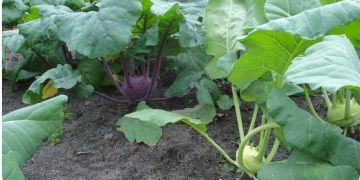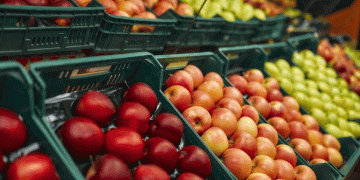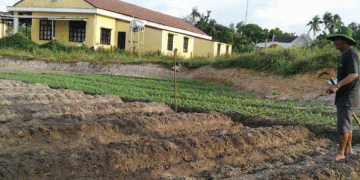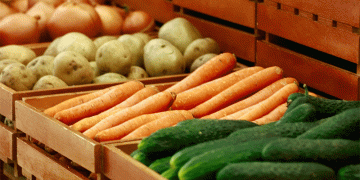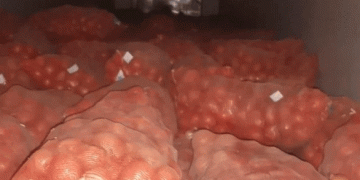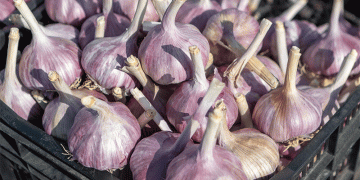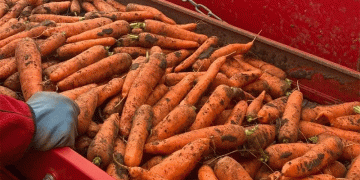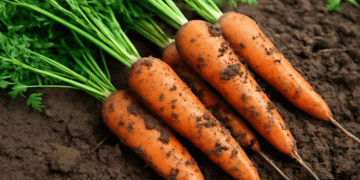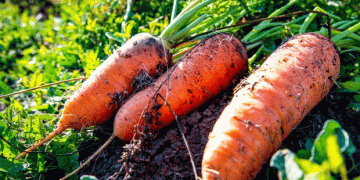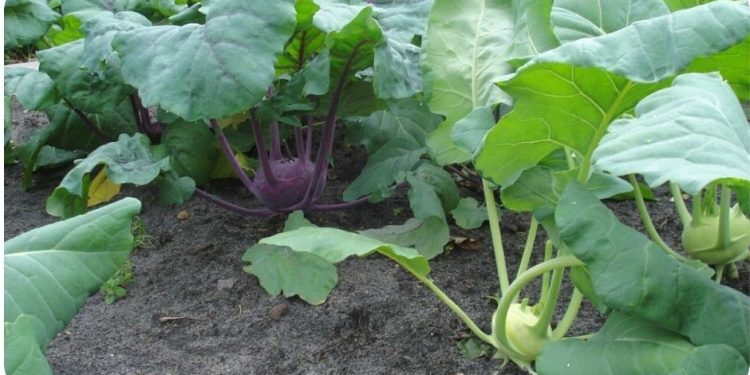Introduction on how to start kohlrabi gardening for beginners, kohlrabi planting questions and answers (FAQs): Hello gardeners, we are here with one more topic today and the topic is all about kohlrabi gardening. Do you want to grow your own kohlrabi plant and do you have any doubts about planting and growing kohlrabi? Well and then you will need to follow this complete article to have a perfect kohlrabi plant. In this article, we are going to discuss some frequently asked questions about kohlrabi gardening.
Kohlrabi is a biennial vegetable that is a low, stout variety of wild cabbage. It is also known as a German turnip. Cabbage, broccoli, Cauliflower, Kale, Brussels sprouts, Collard greens, Savoy cabbage, and Gai Lan are all planters of the same species. It’s delicious either raw or cooked.
A step by step guide on how to start kohlrabi gardening for beginners, planting questions and answers, and kohlrabi planting FAQs
Kohlrabi is a hardy biennial that is grown as an annual in the United States. Kohlrabi is planted for its swelling base, which is the plant’s stem. The base, which is formed like a globe, rises above the ground. Kohlrabi is an excellent choice for gardens with shallow soil.
There are varieties with white, pale green, and purple skins. The globe base as well as the leaves can be eaten.
In the spring, sow kohlrabi seed 3 to 4 weeks before the final average frost date. Kohlrabi thrives at temperatures ranging from 4.4°C to 23.9°C. It takes 45 to 60 days for kohlrabi to mature. Sow kohlrabi in late summer for the winter plant in warm winter climates. Kohlrabi can tolerate a frost in the early fall.
Kohlrabi should be grown in full light. Kohlrabi should be grown in well-worked, well-drained soil with plenty of organic matter. Before you start planting, work 2 inches or 5 cm of aged compost into the soil. Kohlrabi grows best in soil with a pH of 5.5 to 6.8. In the middle of the season, you need to side-dress kohlrabi with old compost.
In case if you miss this: Fast Gropwing Vegetables For Beginners.
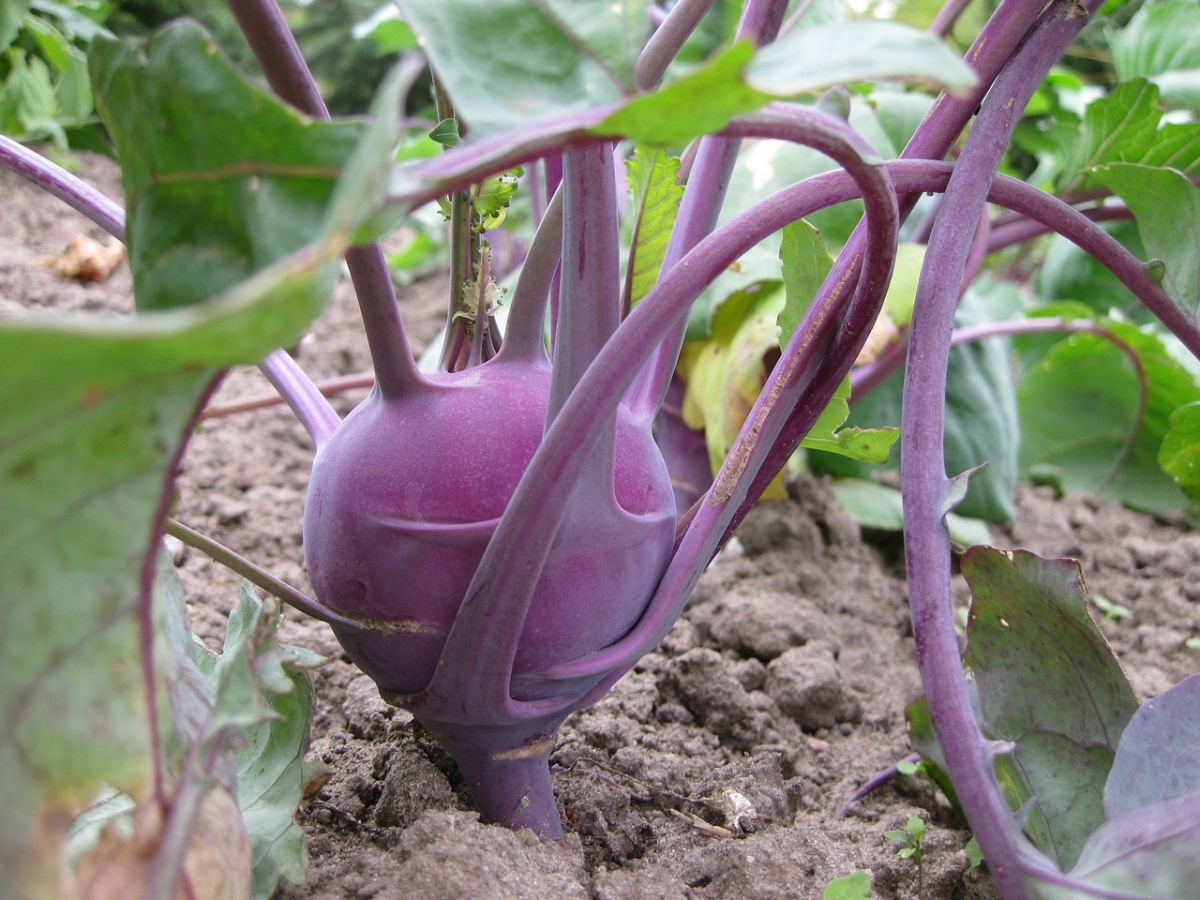
Kohlrabi can be grown year-round in warm winter climates. Late summer is the best time to sow kohlrabi for the winter harvest. Kohlrabi can tolerate a frost in the early fall. Sow kohlrabi in the summer for early autumn harvest in cold winter climates.
For fast development, keep the soil uniformly moist. If you don’t water your kohlrabi, it will get woody. Use aged compost to prepare planting beds. Once a month, better to side-dress kohlrabi with old compost. Alternatively, use a plant-starter fertilizer or a balanced organic fertilizer once a month to feed kohlrabi.
Cutworms, cabbage loppers, and imported cabbage worms can all attack kohlrabi. To prevent seedlings from cutworm damage, wrap collars around the stems. Wash plants with a mild soap solution to remove egg clusters from beneath the leaves. Cabbage worms can be sprayed with Bacillus thuringiensis to kill them.
Cabbage yellows, club root, and downy mildew can all affect kohlrabi. Choose disease-resistant varieties to plant. Plants that are contaminated should be removed and destroyed.
Now, let us discuss some frequently asked questions about kohlrabi gardening;
When is the best time to plant kohlrabi?
How about this: How To Grow Heirloom Vegetables.

Kohlrabi prefers full light and rich, well-drained soil. In the North, you can grow this cool-season plant for a spring or fall harvest, while in the South, you can plant it for a winter harvest. Plant the seeds outside when the risk of a heavy frost has passed for a spring harvest; sow around midsummer for an autumn crop, or in the fall for a winter crop.
Is full sun required for kohlrabi?
Kohlrabi needs at least 6 hours of direct sunlight per day, but more is preferable. Give it soil that is fertile, well-drained, and moist, with lots of organic matter. Clubroot disease is inhibited by a soil pH of 6.5 to 6.8.
What can’t you grow alongside kohlrabi?
Beets, Brassicas, Cucumbers, and Onions all benefit from the addition of kohlrabi. Planting near peppers, pole beans, strawberries, and tomatoes is not a good idea.
Is kohlrabi a simple vegetable to grow?
Kohlrabi can be grown in a variety of soil types, however, they thrive under the following conditions: A well-drained, well-dug soil that contains a lot of well-rotted organic matter. Before sowing seed, do not apply manure to the site. Kohlrabi grows well in soil that is neutral to slightly alkaline.
Is it too late to grow kohlrabi?
Planting Season: Seeds can be planted outside shortly after the last frost or inside several weeks before the last frost and then transplanted outside. Direct sow seeds 90 days before the first frost date if planting kohlrabi as a fall crop.
Is it possible to grow kohlrabi in containers?
You may also check this: Herb Gardening For Beginners.

Kohlrabi is a great vegetable to grow in a container. Simply choose a container that is large enough (at least 16 inches in diameter and 16 inches deep) and fill it with a decent potting soil mix that includes plenty of nutrient-rich compost.
What size kohlrabi should be harvested?
Kohlrabi that is large and older is rough and woody, with an off-flavor. When the first stems are about one inch in diameter, start harvesting (pulling or cutting at ground level). Continue harvesting until the stems reach a diameter of 2 to 3 inches.
What are some plants that go well with kohlrabi?
A good companion for kohlrabi:
- Bush beans
- Beets
- Celery
- Cucumbers
- Lettuce
- Onions
- Potatoes
Is it possible to transplant kohlrabi?
Starting the seeds indoors is the greatest approach to improve your chances. Kohlrabi transplants well, and it’s the best way to extend your growing season in the spring. Because kohlrabi needs cool temperatures to thrive, start your seeds inside as early as February.
What’s the reason for my kohlrabi bolting?
Humidity and temperature – Kohlrabi is finished growing when summer temperatures arrive. Warm weather will cause plants you didn’t get around to harvesting to bolt or produce blossoms.
What is the best way to fertilize kohlrabi?
Fertilizer – Kohlrabi isn’t a particularly heavy feeder. In most gardens, fertilizing with 3 to 4 quarts per 100 sq ft (3.3 to 4.4 liters per 9.3 sq m) of a decent organic all-purpose 5-5-5 fertilizer 2 weeks before sowing or transplanting will usually see a plant through to harvest.
What is the best way to plant kohlrabi seeds?
kohlrabi seeds should be spaced approximately 2 inches apart in rows, tapering to about 6 inches apart as seedlings appear. Rows should be spaced 10 to 12 inches apart.
Should I sow kohlrabi in a row?
Direct sow seeds 90 days before the first frost date if planting kohlrabi as a fall plant. Transplant kohlrabi seedlings outdoors roughly 1 to 2 weeks before the last frost date in the spring.
Is it necessary to prune kohlrabi?
It is not required to cut back the leaves when growing kohlrabi. Cut some young tender leaves and eat them raw or cooked like kale or other greens. Instead of the ball root, my kohlrabi is bolting and growing flower stems.
How long does kohlrabi take to grow from seed?
Requirements for Spacing: kohlrabi seeds should be sown 14 inches deep. Plants need to be spaced 9 to 12 inches apart. Germination time: 3 to 10 days Special Notes: Kohlrabi does not grow well in sandy soil.
When it comes to kohlrabi, how do you tell when it’s time to harvest it?
Kohlrabi that is large and older is rough and woody, with an off-flavor. When the first stems are about one inch in diameter, start harvesting (pulling or cutting at ground level). Continue harvesting until the stems reach a diameter of 2 to 3 inches.
What is the best way to grow kohlrabi?
Fertile soil is the foundation for kohlrabi seed propagation. When beginning kohlrabi from seed, sow the seeds approximately 14 inches deep in 2 foot-long rows. Within 4 to 7 days, seedlings will emerge and should be trimmed to 4 to 6 inches apart in the row.
Why is my kohlrabi starting to wilt?
On the leaves of your kohlrabi plants, downy mildew and powdery mildew are pretty prevalent. While tiny amounts of sick leaves are unlikely to kill the plant, big areas of diseased leaves can cause severe wilting and damage the edible leaf surfaces.
Kohlrabi is eaten by what type of pests?
Kohlrabi is vulnerable to the same pests and diseases that affect other Brassicaceae family members. Cutworms, cabbage worms, flea beetles, aphids, damping-off, root rot, and snails and slugs are all examples of this.
Kohlrabi requires how much sunlight?
Kohlrabi prefers full light and rich, well-drained soil. In the North, you can grow this cool-season crop for a spring or fall harvest, while in the South, you can plant it for a winter harvest.
How do you keep kohlrabi safe?
If the weather is dry, irrigate the plants because a lack of water will result in woody stems. They require more water than most other plants. Mulch around them will aid with water retention.
What bug eats the leaves of kohlrabi?
Many pest insects, such as cabbage worms, harlequin bugs, and flea beetles, can harm kohlrabi. Pick cabbage worms and harlequin bugs by hand when they appear. Organic garden dust can be used to control all of these kohlrabi bugs. Large flea beetle infestations can be treated using pyrethrin spray.
What’s the best way to keep bugs off my kohlrabi?
Keeping your landscape neat will also aid in the prevention of these issues. Plants like marigolds can also be used to attract natural insect predators and keep unwanted insects out of your growing space. Using floating row covers to keep undesirable caterpillars away from your plants is also a smart idea.
Why isn’t my kohlrabi growing?
When plants are spaced too tightly together, this can happen. It can also be caused by poor growing conditions, such as excessively hot or cold temperatures, a lack of water, or a nutrient deficit.
Is it possible to grow kohlrabi in a greenhouse?
Kohlrabi comes in two varieties: green Kohlrabi planted in the spring and purple Kohlrabi planted in the summer and autumn. Purple varieties are hardier and can often be left in the ground until December, especially if cloche protection is provided or they are grown in polytunnels or greenhouses.
Is it possible to grow kohlrabi indoors?
Four weeks before the final frost in the spring, start kohlrabi seed indoors or straight in the garden. Kohlrabi is a cool-season vegetable that grows best in the spring and fall.
